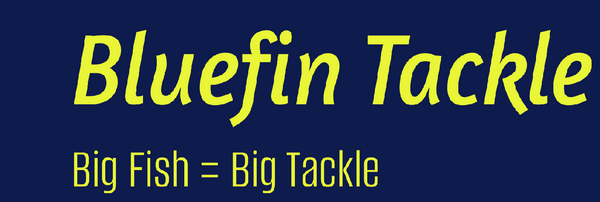
Best Backing for Braided Fishing Line
Share
Best Backing for Braided Fishing Line
Braided fishing line is a favorite among anglers due to its superior strength, sensitivity, and low stretch. However, when spooling a reel with braid, using a backing material is crucial to prevent slippage and improve overall performance. This guide will explore the best backing options for braided fishing line, how to apply them properly, and why they are essential.
Why Use Backing for Braided Line?
Before diving into the best backing options, it is essential to understand why backing is necessary:
- Prevents Slippage – Braid is slick and can slip on a spool, reducing efficiency and making it difficult to reel in fish.
- Saves Money – Using backing reduces the amount of expensive braided line needed.
- Improves Line Capacity – It allows for better line distribution and spool fill.
- Enhances Knot Security – Provides a solid base for knot strength.
Best Backing Options for Braided Line
1. Monofilament Backing
Best For: Spinning reels, baitcasting reels, and trolling setups
Monofilament is one of the most commonly used backings for braided line due to its affordability, availability, and ability to grip the spool.
How to Use Monofilament as Backing:
- Spool 10-50 yards of monofilament (depending on reel size).
- Tie a strong connection knot, such as the Double Uni Knot or Albright Knot, to attach the braid.
- Continue spooling braid until the reel is properly filled.
Pros:
- Affordable and widely available
- Creates a solid grip on the spool
- Easy to tie knots with braided line
Cons:
- Can create an uneven transition if not tied correctly
- May degrade over time due to UV exposure
2. Fluorocarbon Backing
- Best For: High-sensitivity applications, finesse fishing, and clear water conditions
- Fluorocarbon is an alternative to monofilament that offers excellent sensitivity and durability.
How to Use Fluorocarbon as Backing:
- Spool 10-30 yards of fluorocarbon line.
- Attach braid using an FG Knot or Alberto Knot for a seamless connection.
- Fill the reel with braid to the desired level.
Pros:
- Higher abrasion resistance than monofilament
- Virtually invisible underwater
- More sensitivity for detecting bites
Cons:
- More expensive than monofilament
- Stiffer, making knot tying more challenging
3. Electrical Tape as a Backing Alternative
- Best For: Quick and easy setups, budget-conscious anglers
- Using electrical tape directly on the spool provides a grippy surface for the braid, preventing slippage.
How to Use Electrical Tape as Backing:
- Apply a single layer of electrical tape around the spool.
- Tie the braid directly onto the tape using an Arbor Knot.
- Spool the braid to the desired amount.
Pros:
- Extremely simple and quick to apply
- Prevents slippage without adding additional line
- Budget-friendly solution
Cons:
- Does not add line capacity
- Can deteriorate over time
4. Dacron Backing
- Best For: Big game fishing, offshore applications
- Dacron is a braided line alternative that is commonly used in saltwater fishing.
How to Use Dacron as Backing:
- Spool 50-100 yards of Dacron onto the reel.
- Connect the braided line using a loop-to-loop connection or an Albright Knot.
- Spool the remaining braid onto the reel.
Pros:
- Extremely durable
- Does not stretch
- Suitable for high-strength applications
Cons:
- More expensive than monofilament or tape
- Overkill for most freshwater applications
Choosing the Right Backing for Your Reel
Spinning Reels
- Best Option: Monofilament or electrical tape
- Reason: Provides a secure grip and prevents line slippage without adding too much bulk.
Baitcasting Reels
- Best Option: Monofilament or fluorocarbon
- Reason: Ensures smooth casting and improves sensitivity.
Trolling & Offshore Reels
- Best Option: Dacron or monofilament
- Reason: Can handle extreme stress and big game fish.
Best Knots for Connecting Backing to Braided Line
- Double Uni Knot – Great for monofilament and fluorocarbon.
- Albright Knot – Excellent for smooth transitions.
- FG Knot – Best for connecting fluorocarbon leaders.
- Arbor Knot – Used when tying braid directly to the spool.
Conclusion
Using backing for braided fishing line is essential to maximize efficiency, reduce costs, and improve performance. Whether you opt for monofilament, fluorocarbon, electrical tape, or Dacron, selecting the right backing will enhance your fishing experience. Make sure to secure the line with the proper knots and fill the spool adequately for the best results. With these techniques, you’ll enjoy better control, durability, and overall success on the water!
